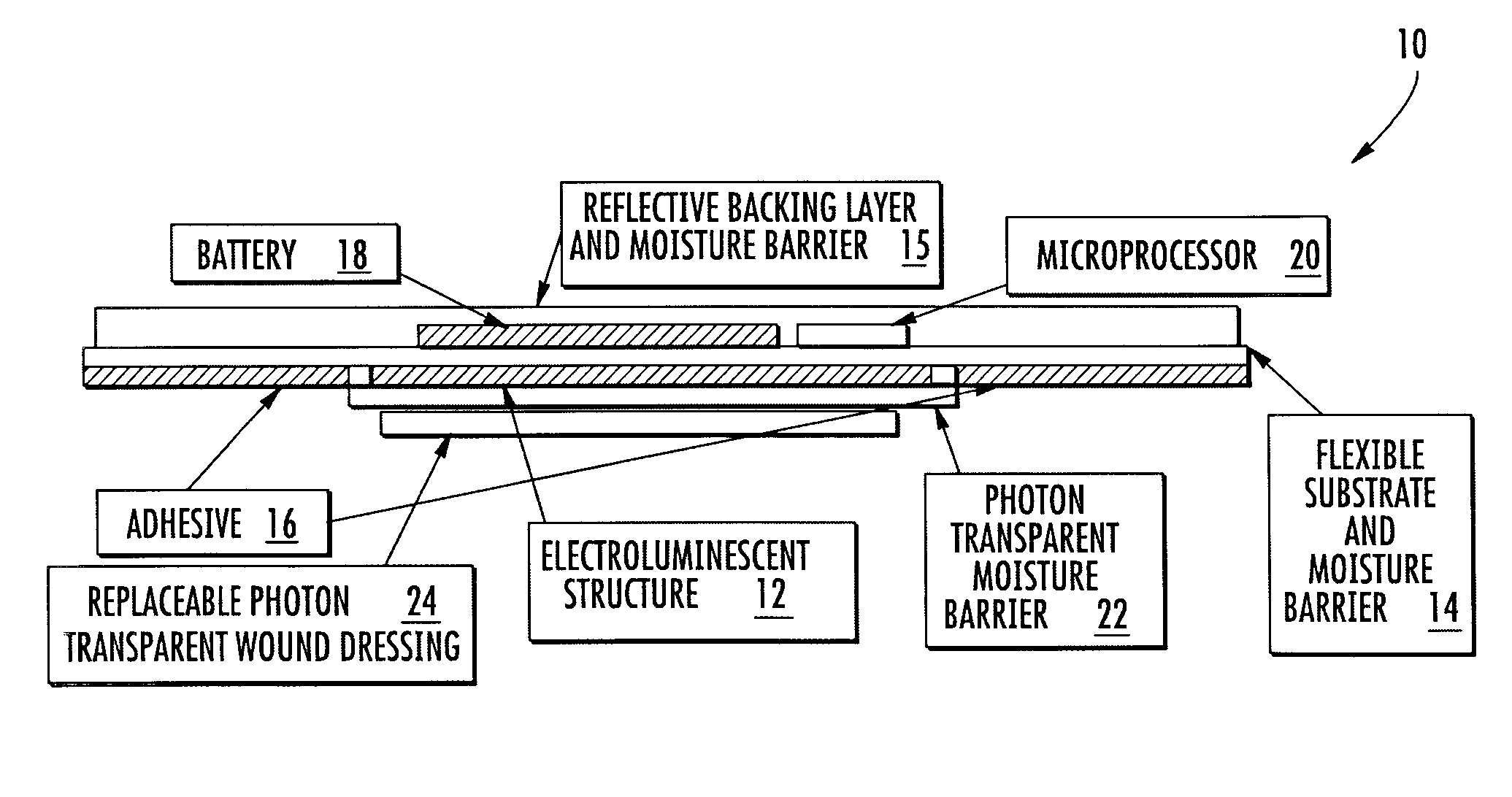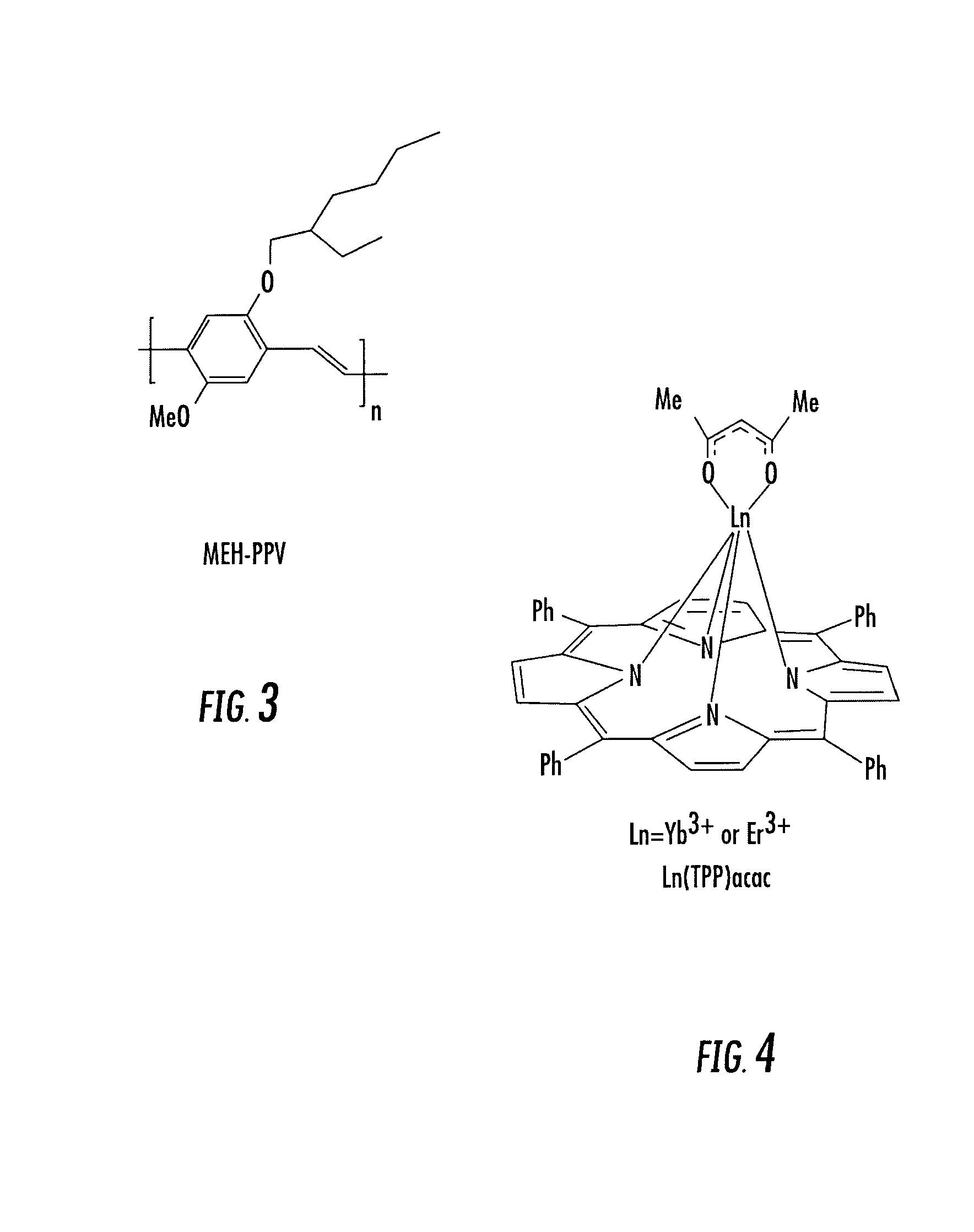Phototherapy bandage
- Summary
- Abstract
- Description
- Claims
- Application Information
AI Technical Summary
Benefits of technology
Problems solved by technology
Method used
Image
Examples
Embodiment Construction
[0039]The phototherapy bandage 10 of this invention is capable of providing radiation to a localized area of a patient, who may be a human or animal, for accelerating wound healing and pain relief. In addition, phototherapy bandage 10 may also be used for photodynamic therapy and for aesthetic applications. In one embodiment, phototherapy bandage 10 is flexible and capable of being attached to a patient without interfering with the patient's daily routine. Phototherapy bandage 10 may easily conform to the curves of a patient and may come in a variety of exterior shapes and sizes.
[0040]The term “phototherapy”, as used herein is intended to embrace both phototherapy and photodynamic therapy. The term “infrared” as used herein is intended to encompass the range of light spectrum above approximately 650 nm and includes regions often termed “near-infrared” and includes “mid-infrared.”“Transparency” as used herein is defined as passing a substantial portion of light at a wavelength of int...
PUM
 Login to View More
Login to View More Abstract
Description
Claims
Application Information
 Login to View More
Login to View More - R&D
- Intellectual Property
- Life Sciences
- Materials
- Tech Scout
- Unparalleled Data Quality
- Higher Quality Content
- 60% Fewer Hallucinations
Browse by: Latest US Patents, China's latest patents, Technical Efficacy Thesaurus, Application Domain, Technology Topic, Popular Technical Reports.
© 2025 PatSnap. All rights reserved.Legal|Privacy policy|Modern Slavery Act Transparency Statement|Sitemap|About US| Contact US: help@patsnap.com



